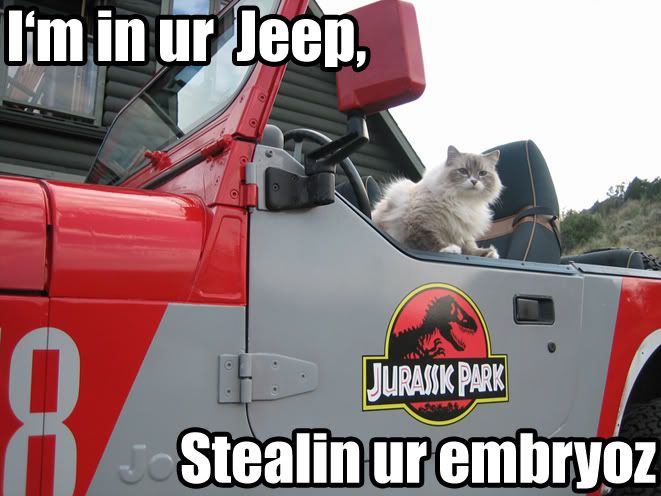Yes, playing with fire. The next thing we know they'll be cloneing knuckle-dragging troglodites and there are enough of them running around as it is!
If they bring back the female kind that you can grab by the hair, drag into a cave, and have your way with...and then they're loyal for life... I won't object.

****EDITED BY MODERATOR TO REMOVE POLITICAL CONTENT****
Seriously, I think if they can do this, they should. We could learn a lot from such an example, and it would be much safer than even a lot of the genetic manipulation they are already engaging in now. The Woolly (NOT "Wolly", by the way) mammoth is not an experimental creature being concocted in a lab; it is an actual creature that existed, and not that long ago. It existed alongside early man, in a world with an atmosphere similar to today's, albeit in colder (Ice Age) zones, where its long wool coat was a necessity. Keep these somewhere cold (Northern Canada? In a giant air-conditioned place?), and they should be fine.
The experiments with "roundup ready" food crops are far, far scarier than this idea. Jurassic Park was a deeply flawed bit of Hollyweird fiction, and the reality in this case is completely different. This is a worthy scientific endeavor, and a very "cool" one at that. I say GO FOR IT!
BUT! If they are going to do this, they should aim to clone a number of different animals and breed them, not just make one lonely individual. They should plan ahead to have reserves where they can breed and live out full lives. I don't think we should (re)create creatures just as "lab rat" specimens, if they are going to have rough lives. Elephants are highly intelligent creatures which exhibit clear signs of complex emotions and social mores, and I assume Mammoths were the same. We should respect that, and give them a chance at "good" lives even as we study them, not mere existence.
That also raises another set of questions, though. Elephants have learned survival patterns that are passed on from one generation to the next. In Africa, herd elders pass on knowledge of where water holes stay wet during droughts, of plants to eat and ones to avoid at certain times of year, and many other things that are not instinctive. How do these creatures develop such knowledge in the first place? They are somewhat migratory, too; how can we guarantee them a large enough area to live in, if they need to migrate with seasons? What does their presence do to the vegetation and other flora and fauna of a region that hasn't seen them in thousands of years? (i.e., what is their environmental impact?) A lot of such things should be considered and worked out, before we actually bring them back into existence. But these things CAN be satisfactorily worked out, even if it involves some compromises; life and such living creatures are somewhat flexible and adaptable (within reason).
We once had huge numbers of bison in large areas; today we have only relatively small herds of bison in limited areas, but they do fine and have stable populations and live decent lives. Why not something similar for mammoths? It wasn't only climate change or sabertooths that wiped out the mammoths; early hunting man had a lot to do with it, too, just hunters almost wiped out the bison more recently. Here is a chance to undo something that perhaps we shouldn't have done in the first place (?).
I think we SHOULD do this, if we can. Let's just do it intelligently.
 oh yeah and lots of it. lets bring em back. then lets hunt em out of existance again.
oh yeah and lots of it. lets bring em back. then lets hunt em out of existance again.

